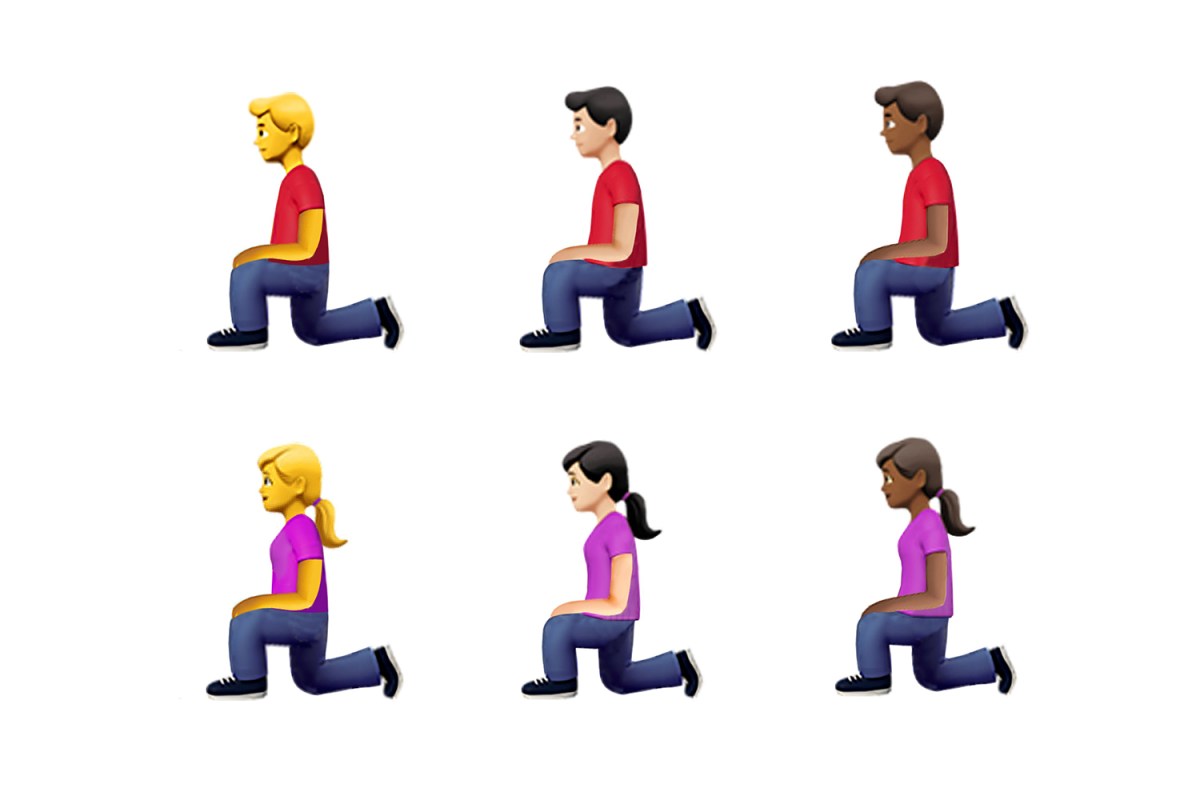Back in 2019, the world rejoiced over the arrival of what was immediately and inevitably deemed the “blowjob emoji.” According to Emojipedia, the “person kneeling” emoji was actually meant to represent “someone in prayer, or a person resting on the floor,” but because the internet is the internet, the kneeling emoji, like so many other seemingly innocent emoji before it, quickly turned horny.
This is about to be the blowjob emoji. I don't make the rules. https://t.co/18bX4qe2nt
— Miss Anna Palomina | BERLIN (@anna_palomina) October 30, 2019
As it turns out, this emoji was never supposed to exist at all. According to a recent story from Fast Company, the designer who initially submitted a request for a kneeling emoji to the Unicode Consortium actually intended the kneeler to be taking a knee in protest, Colin Kaepernick style.
Graphic designer Ji Lee submitted the proposal to Unicode back in 2018 after being inspired by Kaepernick’s controversial kneeling during the national anthem. Two years later, the relevance of a protest emoji is perhaps greater than ever, and yet Lee’s design still isn’t widely available.
“I realized there was no ‘kneeling’ (in protest) emoji so I designed one. This was two years ago,” Lee wrote in a recent Instagram post. “We still don’t have one and I think it’s time we add this to the emoji library. Hello, Unicode, can we please make this happen?”
According to Fast Company, Lee’s design ended up as the “person kneeling” on two knees emoji that we have today, likely because, while the graphic in the proposal did show the figure on one knee, the proposal did not specify that the kneeler should be on one knee instead of two.
“Implementation got mangled along the way and became person kneeling on two knees by all companies except Google,” wrote Jennifer 8. Lee, vice chair of the Unicode emoji subcommittee and co-founder of Emojination.
This is the original 2017 tweet from @PleaseEnjoy that caught @emojination attention, and lead to this KNEELING PERSON emoji proposal. But implementation got mangled along the way and became person on kneeling two knees 🧎 by all companies except Google. https://t.co/AEPGuc5q3O https://t.co/XBipdxpVM8
— Jennifer 8. Lee (@jenny8lee) June 10, 2020
“In retrospect, the emoji should’ve perhaps been more clearly named like, ‘person down on one knee.’ There’s ambiguity in the word kneeling, but we had thought the proposal image was enough guidance,” said Ji Lee, adding, “the proposal was weak in making the emoji as a protest emoji rather than kneeling as a custom or cultural position.”
So there you have it, a tale as old as the internet: you try to give the world something of substance, like a peaceful protest emoji, and in return, the internet spits out a blowjob emoji instead. This is why we can’t have nice things.
Subscribe here for our free daily newsletter.
Thanks for reading InsideHook. Sign up for our daily newsletter and be in the know.


















